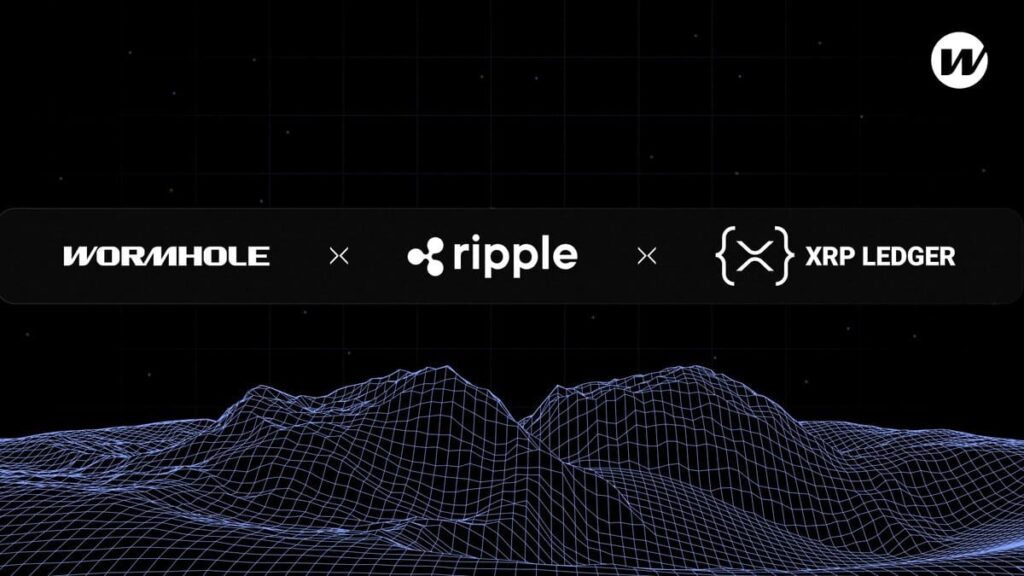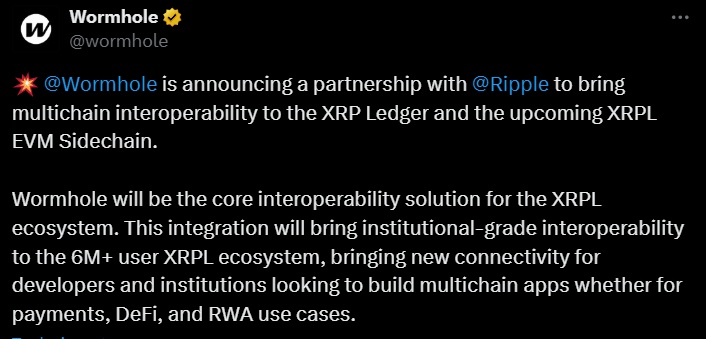TL;DR
- Ripple integrated Wormhole into XRPL and its EVM sidechain, enabling assets and messages to move directly across more than 35 blockchains.
- The integration allows multichain token issuance, native transfers, and cross-chain smart contract execution — key elements for institutional blockchain ecosystems.
- Wormhole connects XRPL to blockchains already used by firms like BlackRock and Apollo, expanding its utility for DeFi, tokenization, and corporate digital finance.
Ripple announced the integration of Wormhole into its network, a move that will notably improve the interoperability of the XRP Ledger.
Why Did Ripple Choose Wormhole?
This agreement links both the XRPL mainnet and its EVM-compatible sidechain, enabling assets and messages to circulate natively across more than 35 blockchains. The goal is to consolidate XRPL as a central piece of on-chain financial infrastructure used by major institutions.
By incorporating Wormhole, Ripple will enable multichain token issuance and seamless asset transfers between different networks without losing control over the original issuance. It will also allow smart contract interactions across various blockchains, removing one of the main technical limitations for developers and firms operating decentralized finance at an institutional scale.
Wormhole is one of the most widely used cross-chain interoperability protocols, already working with firms like BlackRock, Securitize, and Apollo. Integrating its technology into Ripple’s ecosystem will simplify previously complex financial operations and improve the mobility of digital assets, eliminating the usual cross-chain restrictions.
David Schwartz, Ripple’s CTO and co-creator of XRPL, explained that interoperability cannot be limited to isolated solutions. He noted that for mass adoption to happen, digital assets must move frictionlessly between different blockchains while preserving their properties and governance. The company behind XRP aims to meet that demand by incorporating a direct connectivity layer between XRPL and other relevant networks.
Building DeFi Services for Institutions
Ripple has been carrying out several updates to its ecosystem. In June, XRPL added support for USDC, onboarded Ondo Finance as a platform for tokenized public debt, and confirmed that its EVM sidechain will officially launch before the end of the second quarter. These developments aim to deliver decentralized financial services for institutions, with multichain compatibility and tools designed for regulated environments.
For Wormhole, this integration connects one of the industry’s oldest ledgers to its interoperable blockchain network. The synergy will greatly expand XRPL’s utility and open access to new DeFi applications and services within corporate environments













